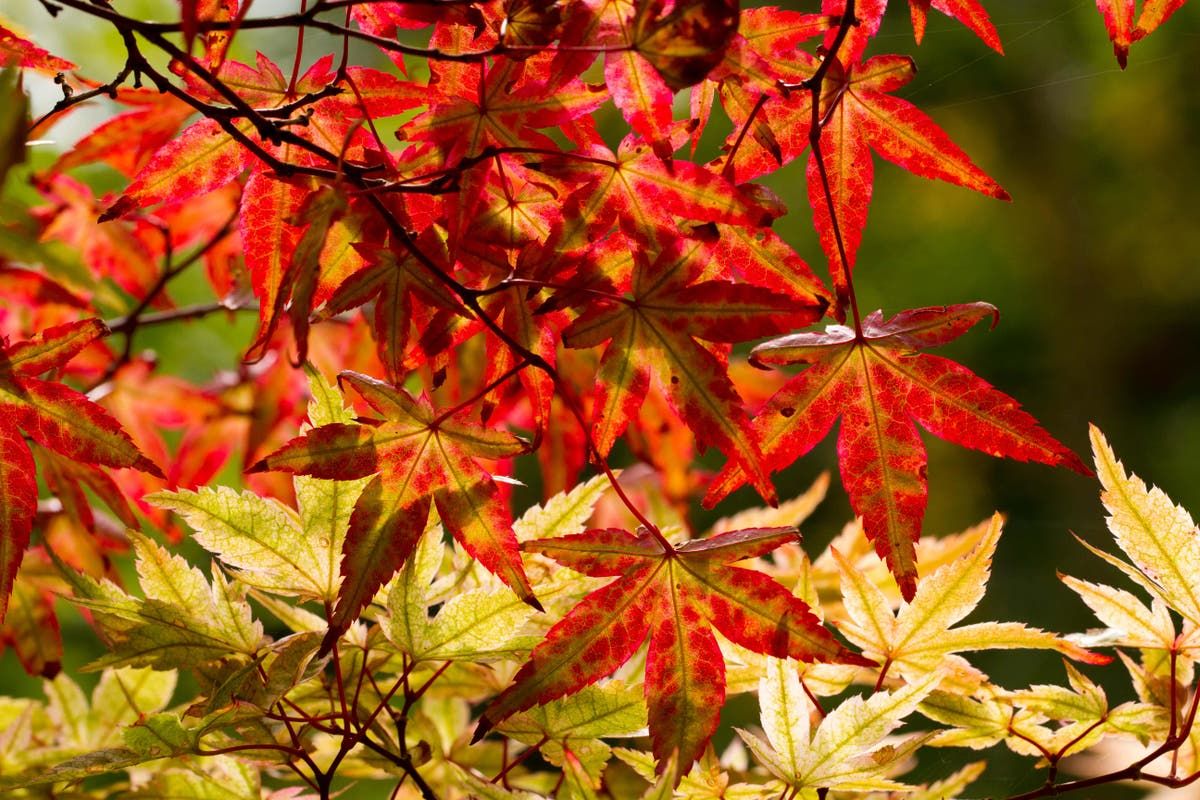Your support helps us tell the story.
In my reporting on women's reproductive rights, I have witnessed the critical role that independent journalism plays in protecting freedoms and informing the public.
Your support allows us to keep these vital issues under the spotlight. Without your help, we would not be able to fight for truth and justice.
Every contribution ensures that we can continue reporting on the stories that impact lives.
Kelly Rissman
US News Reporter
The autumn garden can be just as colourful as the summer one, but it's not just the brilliance of flowering plants such as rudbeckia and dahlias that set the scene, it's also the fantastic hues achieved when the leaves turn buttery yellow, burnt orange and lava red.
Plants that produce spectacular leaf color in the fall generally look most impressive in the sun, especially if they are backlit, so their leaves produce a colorful stained glass effect.
So what are the plants that will give you spectacular leaf color as the weather cools?
1. Cotinus coggygria (Smoke bush)
Smoke bush is a shrub that will keep you company for several months, with its delicate, smoke-like pink summer flowers giving way to a flash of colour as its leaves turn from light green to striking red and orange. Plant it in moist, well-drained soil and prune it back after flowering if necessary.
2. Euonymus alatus (spindle bush)
If you love bright red in autumn, this shrub, which can grow up to 2m x 2m, is the one for you. Yes, there are smaller, variegated evergreen types that are often used as filler in winter hanging baskets, but this deciduous candidate is worth considering and will give you a foliage display of deep flame-coloured leaves.
3. Acer palmatum (Japanese maple)
There's a Japanese maple for every garden, whether you want a large, deep burgundy specimen to cast shadows over other shrubs and plants, or simply want to add a touch of elegance in a pot on your patio, with delicate foliage that sways in the breeze. Among my favourites is 'Bloodgood', which can grow quite large, up to 4.5m x 4.5m, but will give you striking purple leaves, which turn blood red in autumn. For containers, a good choice is Acer palmatum var. dissectum, a dome-shaped tree whose mid-green leaves turn gold in autumn. The varieties 'Sango-kaku', whose leaves turn butter-yellow in autumn, and 'Osakazuki', which produces scarlet in autumn, are also favourites.
4. Amelanchier
These small trees have become more popular in recent years, and have been featured at garden shows including the Chelsea Show, and for good reason – they can be the best tree you can have in a small space, and they earn their place because they provide interest all year round. They produce beautiful white flowers in abundant sprays in spring, while in autumn their leaves turn scarlet red and deep orange.
5. Flowering dogwood
Many flowering dogwoods produce flame-coloured autumn accents, including Cornus ‘Porlock’, which grows quickly and soon becomes wide, with spreading branches and bracts that turn from green to white to blush pink. Cornus florida has unusually ruffled leaves that open into petal-like white bracts surrounding green flowers with yellow tips in spring and the leaves turn from pink to red to purple in autumn. Check when you buy, but many will grow to just 3 x 3 metres in 20 years, making them ideal choices for smaller spaces.
6. Cercis canadencis
Another easy-to-grow specimen, ideal for small gardens and even suitable for potting, is this multi-stemmed deciduous tree with bright red leaves that gradually turn into beautiful shades of orange-red, yellow and purple in autumn. They are best displayed in a spot where the sun can backlight the autumn foliage, which appears almost translucent.
7. Hydrangea quercifolia
Oakleaf hydrangea is so named for its large, impressive leaves, which are shaped like those of an oak tree and turn crimson-bronze in autumn before falling. This loose, open-growing deciduous shrub produces large, white, conical inflorescences at the ends of its branches in late summer that fade to pink. It likes a moist, semi-shaded site in moist, organically enriched soil.
8. Boston Ivy
Anyone looking to cover their fence or wall in bright colour (but willing to put in the work to keep it under control) should consider Boston ivy (Parthenocissus tricuspidata), preferably planted on a north-facing wall. The leaves of this vigorous climber turn deep red and crimson in autumn, when the nights start to turn chilly. Just be aware that it is potentially huge and self-clinging, so will need plenty of space, although you can prune it back in mid-winter to keep it under control.












